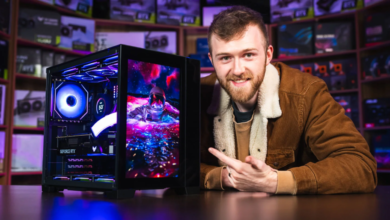
360 Camera Shooting Tips for Action Sports Beginners
If you are new to action sports and want more than flat clips from a phone, a 360 camera gives you room to learn while still capturing exciting moments. Instead of worrying about perfect framing, you can focus on balance, safety, and fun while the small device records everything around you. Later, you choose the best angles and save only the parts that tell the story of your run, jump, or ride. This makes it easier to stay in the moment, because you are not constantly stopping to move a tripod or ask friends to repeat a trick. For beginners, that freedom is often the difference between trying something once and wanting to go again. It also keeps your mind calmer.
Why Action Sports Beginners Benefit From 360 Video
When you first start skateboarding, mountain biking, snowboarding, or any other fast sport, you already have enough to think about without trying to frame a shot. A 360 camera removes much of that pressure by capturing the full scene, not just the direction you guessed was right. You can hold the 360 camera on a selfie stick, mount it on your helmet, or place it near the line you plan to ride. Wherever you put the 360 camera, it will record not only your body movement but also the reaction of friends and the background of the park or trail, which adds context to your progress.
This wide view is especially useful for self coaching. Many beginners feel their first turns or jumps are too small to bother filming, but a 360 camera lets you see more than just the trick itself. You can study how you set up, where you look, and how your board or bike moves through the space. Later, comparing different days of footage from the same spot helps you see real improvement instead of relying only on memory. The 360 camera becomes a quiet teacher that shows you details a friend on the sidelines might miss.
Getting Your 360 Camera Ready Before Each Session
Good action footage starts before you leave home. Charge your 360 camera fully and clear enough space on the memory card so you are not forced to delete clips at the park. Wipe the lenses gently with a soft cloth, because even a small fingerprint can ruin the sharpness of a whole run. Before you pack your bag, quickly test the 360 camera in your living room to check that the buttons, voice control, or app connection are working. This simple check avoids frustration when you reach the spot and find you are missing a setting.
At the location, take one or two warm up recordings before you try anything new. Use these test clips to review exposure, horizon level, and how the 360 camera handles bright sun or shade. If the sky is very bright, consider tilting the 360 camera slightly so that less of the sun dominates the frame. If you ride in a wooded area, note how the light changes when you move between shadows and open sections. Small adjustments at this stage make your later clips easier to edit, because the 360 camera footage will look more consistent across an entire session.
See also: Exploring the Latest in Gaming PC Australia: Trends and Tech
Safe Mounting Ideas for 360 Camera Action Shots
Mounting is one of the biggest choices you make with a 360 camera in action sports. A helmet mount gives a natural point of view and keeps your hands free, but you should always check that the mount does not interfere with safety gear or weaken the helmet shell. For bikes or boards, a chest strap or handlebar mount can make viewers feel like they are riding along with you. Whatever option you choose, test how secure it feels by shaking or bouncing the 360 camera before you start moving at speed.
Think carefully about where the 360 camera might hit if you fall. Avoid hard metal edges and sharp corners that could damage the device or injure you. Many riders like to use a small extension pole that makes the 360 camera “float” slightly above or behind them. This creates dramatic third person angles but still keeps the mount attached to the body, reducing the risk of losing the camera during a crash. For ground shots, place the 360 camera slightly off the main landing area, so you can pass close enough for a dynamic angle without actually hitting it.
Moving With the Camera in Fast Sports
Once you have a stable mounting method, the way you move around the 360 camera shapes how exciting the footage feels. If you ride with the 360 camera on a pole, keep your arm relaxed and let the device float rather than swing wildly. Sudden jerks make the image harder to watch, even though the view is wide. When you approach a feature like a rail, jump, or small drop, try to keep the pole angle steady, then focus your attention on the trick itself. The 360 camera will still capture the full motion, so you do not need to twist your wrist at the last second.
When the 360 camera is mounted on the ground, think about the path your board, bike, or skates will take through the frame. Aim to pass at a safe distance but still close enough to fill part of the view. If you have friends with you, ask one person to keep an eye on the 360 camera so no one accidentally kicks it. Over time, you will develop a sense of which lines and speeds look most dynamic from different positions. By experimenting with simple moves first, you build confidence in both your skills and your use of the 360 camera.
Editing 360 Camera Clips Into Watchable Stories
After a long session, dozens of files from a 360 camera can feel overwhelming, so a simple editing routine helps. Start by quickly scanning each clip and marking the few seconds where something actually happens, such as a clean turn, a first successful grind, or a funny fall that everyone agreed is safe to laugh about. Trim away the long approach and ride out, then use the reframe tools to choose two or three key angles for each moment. This keeps your final videos short and easy for friends to enjoy.
When you edit, think like a storyteller rather than a collector. Instead of posting ten similar clips from the same rail, combine the best attempts into one short sequence that shows your learning process. Begin with a wide angle that shows the whole scene from the 360 camera, then cut to a closer view of your feet or hands for the successful try. Add a final view that captures your reaction or the cheer from friends. By using the flexibility of the 360 camera this way, you create videos that feel complete even when the tricks are small.
Growing Skills and Confidence Over Time
The biggest advantage of using a 360 camera as an action sports beginner is the sense of progress it can reveal. On the first day, you might only be rolling over small bumps or carving gentle turns, yet the footage still looks interesting because the 360 camera shows the full environment around you. Weeks later, when you watch new clips side by side with those early attempts, you will notice smoother body movement, better timing, and more relaxed posture. This visual proof of growth can motivate you to keep practicing on days when progress feels slow.
Try to treat the 360 camera as a training partner rather than a judge. Not every session has to produce a highlight reel, and it is fine to keep some clips private just for your own review. By filming simple drills, warm up runs, and small wins, you give yourself a detailed record of how far you have come. Over time, the combination of regular practice and thoughtful use of the 360 camera will make you more confident both on the board, bike, or skis and behind the lens, turning scary first attempts into memories you are proud to share.




